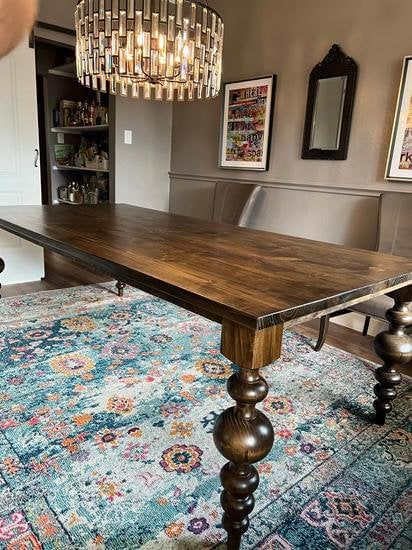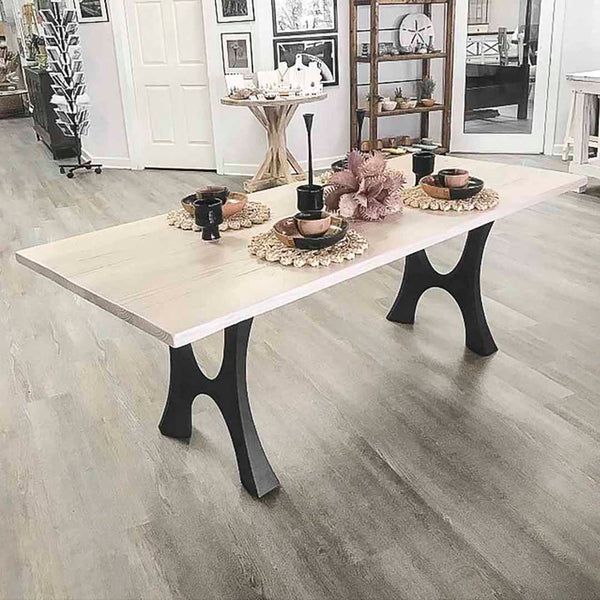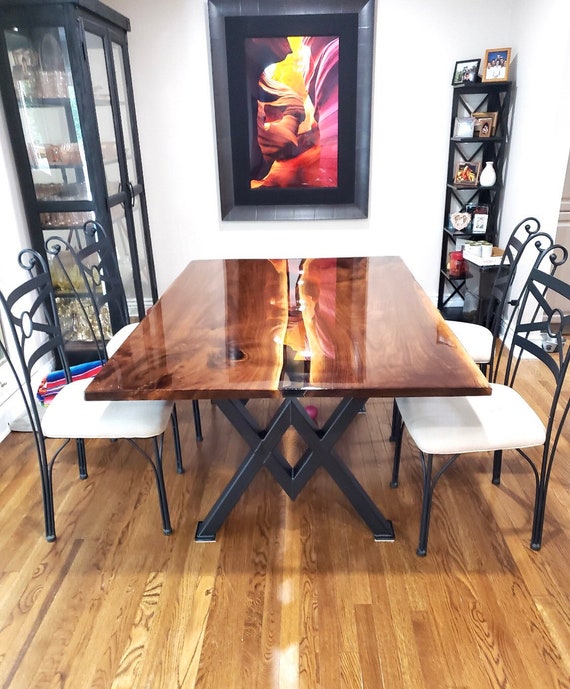Upgrade Your Furniture with Custom Dining Room Table Legs
Wiki Article
Specialist Tips for Installing Dining Space Table Legs for Optimum Security
When it concerns setting up dining area table legs, achieving maximum stability is paramount for both performance and looks. The procedure starts with selecting the ideal products and hardware, complied with by careful alignment and consideration of weight distribution. Each step plays an essential role in making sure that the completed product holds up against daily use without compromising safety and security or style honesty. Nevertheless, understanding the subtleties of these components can dramatically affect the total outcome. What certain techniques can boost stability even additionally?Choose the Right Legs
When picking the ideal legs for your dining-room table, it is necessary to take into consideration both functionality and looks. The legs you select will considerably affect the general design and stability of the table. Assess the table's meant usage; if you expect regular gatherings, sturdier legs, such as those made from solid timber or metal, may be more ideal, as they provide enhanced sturdiness and support.Typical eating tables typically vary from 28 to 30 inches in elevation, so ensure the legs line up with this standard for comfort. Tapered legs can include a modern touch, while turned legs might communicate an extra timeless visual.

Select Appropriate Hardware
Exactly how can the best equipment enhance the stability and long life of your dining-room table? The selection of proper equipment is vital to guaranteeing that the legs of your table are securely attached and able to stand up to routine usage. Top notch screws, bolts, and brackets provide the necessary toughness to sustain the weight of the table, along with any kind of additional lots put upon it during meals or events.When choosing screws, go with those made from resilient products such as stainless steel or brass, which stand up to corrosion and maintain honesty gradually. The length of the screws is equally important; they ought to pass through deeply right into the table's framework without jeopardizing stability. For bolted connections, consider making use of lock washers to avoid loosening up as a result of resonance or activity.
In addition, utilizing edge brackets can include added assistance, specifically for bigger tables or those with larger tops. These braces disperse weight uniformly and help keep the table's shape. Making sure that the hardware you choose is suitable for the specific products of your table will further boost its general stability and longevity, enabling you to enjoy your eating experience for many years to find.
Ensure Proper Placement
Appropriate alignment of eating space table legs is important for both visual charm and functional security. Misaligned legs can lead to an irregular tabletop, which might not only be aesthetically unappealing yet also endanger the table's usability. To attain optimal placement, begin by determining the distance from the table's corners to the leg add-on points. This makes sure that each leg is positioned equidistant from the edges, developing a balanced look.Make use of a degree throughout installment to verify that each leg is vertical to the table top. It is suggested to note the wanted leg positions on the underside of the table with a pencil or masking tape before securing them.
Additionally, confirm the positioning after the preliminary screws are tightened up, as modifications may be required before completely safeguarding the equipment. By prioritizing correct positioning, you not only boost the table's total style however likewise make certain that it continues to be secure and useful for many years to find.

Take Into Consideration Weight Distribution
After ensuring correct positioning of the dining area table legs, it's vital to think about weight distribution to boost stability and capability. dining room table legs. Appropriate weight distribution is crucial in protecting against tottering and guaranteeing that the table can sustain its designated lots without danger of tipping or collapsingWhen placing the legs, ensure they are positioned at equal ranges from the center of the table to equally distribute the weight throughout the structure. Think about the weight of the tabletop and any type of items that will regularly hinge on it, such as attractive pieces or tabletop devices. Tables with much heavier surface areas should preferably have legs positioned closer to the corners, as this maximizes the base of support and minimizes the threat of instability.
Furthermore, if the table is intended for use in a high-traffic location, consider utilizing larger basics materials for the legs or adding maintaining elements, such as cross-bracing or a lower rack - dining room table legs. These changes can help preserve equilibrium and prevent moving throughout usage. Ultimately, a well-considered weight distribution approach will considerably improve the table's general performance, guaranteeing it continues to be a appealing and useful focal point for your eating space
Test Stability Before Use
Checking the stability of the dining space table before use is an essential step that should not be overlooked. If the table reveals instability, recognize the legs or joints that might call for adjustment.Following, inspect that all screws and fasteners are tightened up effectively. Loosened connections can cause instability and potential damages gradually. If required, use timber adhesive on joints to enhance More Bonuses security, making sure to enable sufficient drying out time.

Final Thought
To conclude, the installation of eating space table legs requires cautious consideration of products, weight, alignment, and hardware circulation to attain maximum stability. By choosing high-quality fasteners and durable legs, making certain precise alignment, and distributing weight uniformly, the architectural honesty of the table can be significantly enhanced. Carrying out a stability examination before normal usage further guarantees that the table will certainly stand up to day-to-day stress, therefore providing a risk-free and trusted eating experience.When it comes to mounting eating room table legs, achieving maximum stability is paramount for both functionality and visual appeals. The legs you select will considerably affect the overall design and stability of the table (dining room table legs). Standard eating tables typically vary from 28 to 30 inches in elevation, so make sure the legs line up with this requirement for comfort.Proper placement of eating space table legs is vital for both aesthetic appeal and useful security.In conclusion, the installation of dining room table legs needs mindful factor to consider of materials, alignment, equipment, and weight distribution to attain maximum stability
Report this wiki page